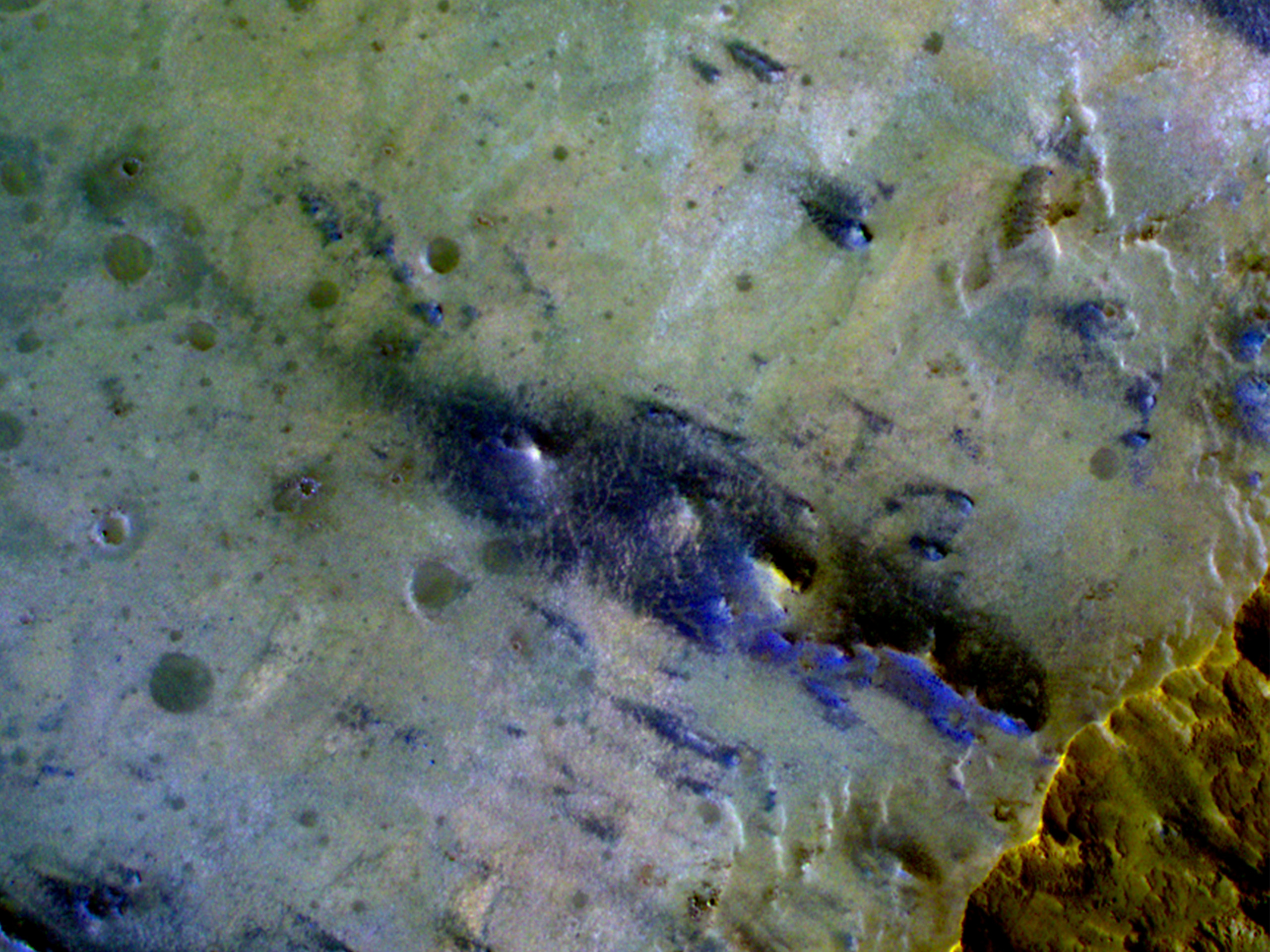Phyllosilicates, some of which are more commonly called clays, are hydrated minerals that typically form through long-lived interactions between liquid water and planetary materials. Their identification on Mars from orbit just prior to when HiRISE arrived there provided important new evidence for a wetter era early in the planet’s history.
At this location, orbital infrared spectroscopy confirms the presence of such phyllosilicates surrounding an impact crater roughly 3 kilometers in diameter. The phyllosilicates were likely ejected from the subsurface by the impact that formed this crater in the Tyrrhena Terra region of Mars’ ancient Southern highlands.
The crater itself dominates the lower right corner of the image. Its upper walls expose a mix of rough-textured darker outcrops and smoother lighter-toned materials, debris from which can be seen extending downslope to the crater floor, where ripples of sand are visible.
The cutout shows the plains adjacent to the crater’s northwestern rim in enhanced contrast, highlighting the range of compositions sampled by the crater that exhibit a range of colors. Phyllosilicate-rich materials on Mars most commonly have relatively orange colors, whereas some of the bluer material visible here may have been less altered by interaction with water.
ID:
ESP_084119_1760date: 6 July 2024
altitude: 263 km
https://uahirise.org/hipod/ESP_084119_1760
NASA/JPL-Caltech/University of Arizona
#Mars #science #NASA
